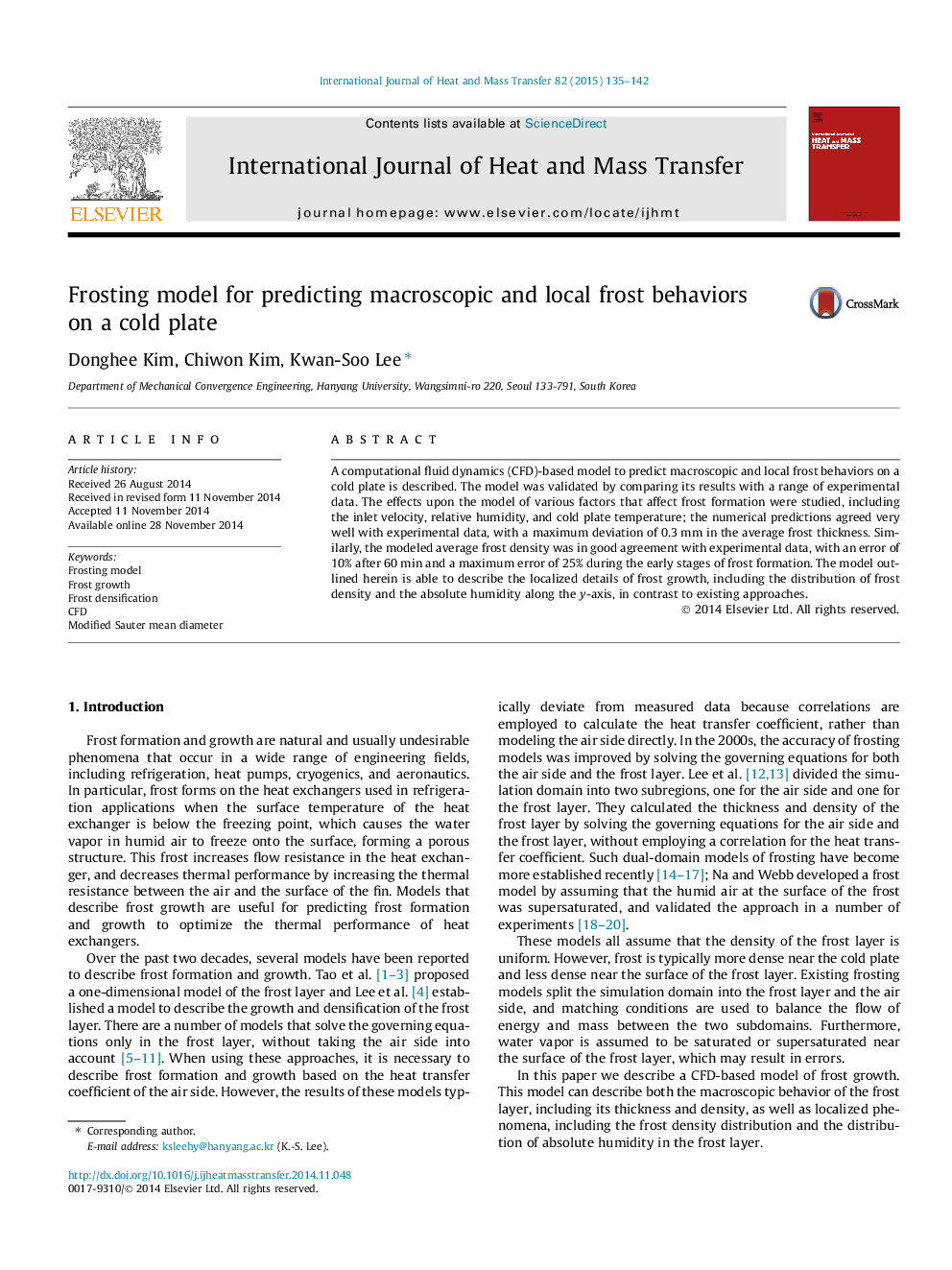| Article ID | Journal | Published Year | Pages | File Type |
|---|---|---|---|---|
| 657334 | International Journal of Heat and Mass Transfer | 2015 | 8 Pages |
A computational fluid dynamics (CFD)-based model to predict macroscopic and local frost behaviors on a cold plate is described. The model was validated by comparing its results with a range of experimental data. The effects upon the model of various factors that affect frost formation were studied, including the inlet velocity, relative humidity, and cold plate temperature; the numerical predictions agreed very well with experimental data, with a maximum deviation of 0.3 mm in the average frost thickness. Similarly, the modeled average frost density was in good agreement with experimental data, with an error of 10% after 60 min and a maximum error of 25% during the early stages of frost formation. The model outlined herein is able to describe the localized details of frost growth, including the distribution of frost density and the absolute humidity along the y-axis, in contrast to existing approaches.
